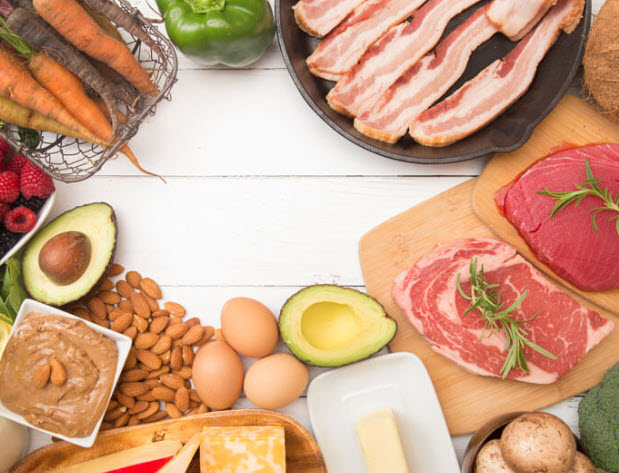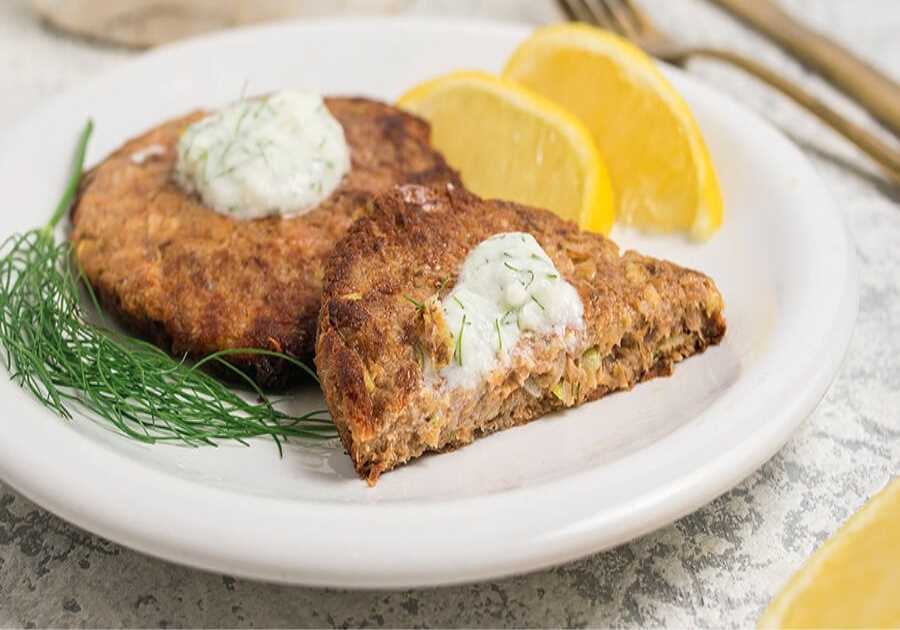
The science behind a successful keto challenge and what to expect!
My journey began when I set a bold challenge – to get healthier and stay healthy. To take control of my health and well-being without sacrificing my time or energy.
The solution was the keto diet – a high-fat, moderate-protein, and low-carb nutritional strategy. Following the keto diet allowed me to achieve my nutrition goals while maintaining an energetic lifestyle.
But once I embraced this new way of eating, there was still one key question left unanswered: why did it work?
Through my own research, I discovered that the answer lies in ketosis - a metabolic state where your body uses fat for energy instead of glucose. This process is triggered by uninterrupted periods of low carbohydrate consumption throughout the day.
When the body isn’t receiving its regular dose of carbohydrates to turn into glucose, it is forced to switch over to using stored fat as fuel instead. As a result, better weight management is possible due to increased caloric burn rather than an elimination of food intake as well as improved overall health through more efficient nutrient supply even in small servings
Of course, like any other dietary change, consistency is key — but luckily with the keto diet, staying within a healthy range of macros (the ratio of fats vs proteins vs carbs) can be maintained without drastic changes if done effectively.
It’s important that you become aware of how your body reacts to different food groups; tracking daily meals with macro percentages will help you stay within your boundaries for optimal success. Additionally – being mindful about what types of fats you consume is essential; focus on foods with natural sources long chain fatty acids such as almonds or avocado!
What to expect on a keto diet: going into ketosis
Eliminating carbs to initiate ketosis is usually the first step of going on a ketogenic diet. Generally, you should decrease your carb intake to below 50 grams or 25 grams of net carbs daily.
Once your body burns through the carb stores in your muscles and liver, it switches over to ketosis for energy production. This transition can be completed within one week for many people, but some may take more time.
Expect rapid weight loss in this period as most are caused by reduced water weight instead of fat burning. To ensure better results, stick with low-carb, nutrient-dense foods while keeping certain vitamins and minerals in mind.
As your body switches from burning carbohydrates for energy, it enters into ketosis and initiates rapid weight loss - most of which is actually water weight - within the first week. You may lose anywhere from 1 pound to 10 pounds of water weight during this time.
Side effects of reducing carb intake
If you're thinking of starting a keto lifestyle, you'll likely be expecting the positives: fat loss, more energy, and improved concentration. But there are some unpleasant side effects that come with taking out carbs too.
These could include temporary constipation; fatigue; headaches, especially in the first days or weeks when your body is still adjusting to the change.
It's important to remember that these symptoms are only temporary—as your body adjusts to its new diet, they will start to disappear within a few days or weeks.
To make it easier for yourself during this transition period, drink lots of water and add more salt to your meals so you can replenish lost electrolytes.
Also try adding in low-carb snacks throughout the day for energy boosts and hunger control, such as hard-boiled eggs or nuts. Paying attention to what your body needs can help kickstart a successful ketogenic journey.
Beyond that initial adjustment period, however, it's likely that any initial discomfort will go away over time as your body gets used to burning fats instead of glucose as its main fuel source.
The key is consistency: show up every day and commit yourself to stick through it every step of the way until you hit your goals and experience all its amazing health benefits on the other side!
If you are concerned about these side effects, talk to your doctor. You can also try a low-carb calculator to design a custom food plan that will work for your needs.
Frequently Asked Questions
Can you eat keto fruit?
Is it possible to eat fruit while on the keto diet? However, be cautious.
The idea behind ketosis is to limit carb intake to burn fat and stay in ketosis. A healthy and balanced keto diet can include some fruits.
While low-carb fruits can fit into a keto meal plan, they should be consumed sparsely and in careful moderation. There are many different fruits with different carbohydrate content. For example, avocados are relatively low in carbohydrates, while bananas have significantly more carbs.
The sugar found in fruit is broken down by your body into glucose, which you use to generate energy. If you are trying to reach nutritional ketosis, an excessive amount of sugar could cause blood sugar spikes. It's important to pay attention to servings sizes and not overdo it on the sugary stuff.
Fresh fruit is better than processed or sugary snacks. It provides essential vitamins, minerals and fibre that help fuel the body without adding extra carbs like desserts or candy bars.
When considering whether or not eating fruit on the keto diet is for you, always remember that fresh fruits are usually healthier than sugary treats - but only if you stick to one small portion at a time!
Can you eat oatmeal on keto?
Finding answers to unanswered queries can be hard. Many people feel lost and overwhelmed when it comes down to choosing the right foods for the keto diet. This is especially true for oatmeal, which is high in carbs.
However, oatmeal can be successfully incorporated into a keto-friendly lifestyle, even though it is not what many people believe. It all comes down to the type of oatmeal and how much.
You need to look at the ingredients, such as nuts, seeds and other low-carb add-ons, that are combined into one deliciously nutritious dish. Pure oatmeal is rich in fibre and protein. However, they do not compromise the keto diet.
When adding oats into your daily diet, you'll need to be careful about how much you eat. It's not a good idea to go on a marathon or make too many breakfast bowls. Instead, be mindful of portion sizes and use innovative ingredients like coconut oil, chia seeds, cinnamon powder to maximize flavour.
If you follow the correct steps, oatmeal can serve as an alternative breakfast option to Keto. If you aren't careful, it won't be easy to convince someone that following your principles means giving up on taste. Proper planning can produce serious results.
Is keto right for you?
It is essential to do your research and ask the hard questions so you can determine what is right for you. The keto diet, which has been popular for many years, is still very popular. It is believed to have health benefits that go beyond weight loss.
Ask yourself: What are my health goals. What are my health goals? Do I want to lose weight or improve my mental clarity? Keto can be a good place to start, even though there is no universal method.
Keto works to reduce the amount of carbohydrates we consume, and is best when there are 20 grams a day. This puts our bodies in a biochemical state called nutritional ketosis, where fat is used as an energy source to replace sugar and glucose. You may find it difficult to stick with this strict carb limit initially, but over time you will adjust and master it.
The ketogenic diet is good for internal and external health. However, it's important to maintain high nutritional quality.
You can make keto a sustainable diet if you have the right nutrition intake. Properly done, keto could be very beneficial. It is worth taking the time to read up on it from trusted sources before making major steps forwards (or backwards).
Are I really going to need a Keto Food List or not?
Are you unsure if you should have a list of keto foods? It is an important part of your journey to keto. You can unlock the potential benefits of the ketogenic lifestyle by eating the right foods, high in fat and low in carbs. Finding the best fuel to achieve your goals can seem difficult with so many food options and recipes.
Knowing which foods are permitted on the keto diet can make meal planning easier and help ensure that you have enough variety every day. A keto food list helps simplify the process by providing information about what you should eat, plus a few ideas on how to prepare them. It is also a quick reference guide that you can use to get to the grocery or restaurant.
A balanced diet and healthy lifestyle can increase weight loss while maintaining wellness. This includes 12-15% protein, 15-30% fat, and no more than 5% net carbs to get into the metabolic state known as ketosis. This is why it is so important not to just identify desirable meals, but also to select those that offer maximum nutrition and minimal carbs.
It can be very helpful to have a reliable keto food guide that lists healthy options within these parameters. This will help you make the transition to cleaner eating habits, which will lead to better health and more purposeful living. This useful resource can help you take the first step towards your lifestyle goals.
How long does lazy keto take to lose weight?
It can be difficult to estimate how long it will take to lose weight using the lazy keto diet. There are many influences on how effective the diet will be, and it won't be the same for every person. It all depends on your lifestyle, goals, and how you adhere to this diet.
Studies show that you might notice a steady decline in body weight within two weeks. However, factors such as an individual's caloric intake and body composition can cause inconsistencies when achieving fat loss goals; therefore, the best advice is to stay consistent with the plan and track your progress over an extended period.
You don't have to exercise every day. Most people who follow this program will see some weight loss within the first month. Regular exercise and sensible eating habits can lead to noticeable results in as little time as seven days.
If you are trying to change your lifestyle, like eating a healthier diet or engaging in exercise, consistency is important. You will be able to reach your goals quicker if your nutrition requirements and metabolism rate are met. With dedication, knowledge, and hard work, significant results from trying programs like lazy keto should appear quickly.
Can I eat a keto vegetarian diet?
Knowing how the vegetarian keto lifestyle works will help you determine if it is possible to eat it. It's not as complicated as it seems; a vegetarian keto diet involves cutting out all animal products from your diet and finding plant-based foods with low carbohydrates but high fats.
It is important to maintain a healthy macronutrient balance when you are following vegan keto. This involves monitoring the amount of carbohydrates, protein, and fat in each meal. While protein should be decreased, fat should be increased. Your body should consume fewer carbohydrates to reach a optimal metabolic state known nutritional ketosis. This will result in your body burning fat for energy instead of glucose.
You'll need to calculate macros and monitor carbohydrate intake. Supplementing with vitamins and minerals like Vitamin B12 is an important part of any vegan ketogenic diet. Many people are not getting enough of this vital nutrient because of their diet choices.
Learn about plant-based options like tempeh and tofu, which are naturally low carbs but high in protein and heart-healthy oils. Then add some strategic supplementation sprinkled by macro counting to ensure you hit your nutrient ratios for success with a vegetarian keto diet.
What happens to your body if you cheat on keto
Cheating on the Keto diet can lead to unwanted side effects. If you suddenly begin eating starchy carbs, the body is unable to process them efficiently and quickly, which can lead to rapid rises in blood sugar. This leads to dehydration since water has to be used for your cells to return to a homeostatic state. A lack of essential minerals, such as potassium and sodium, can cause electrolyte imbalances.
These issues are not the only ones. It is common for people who "cheat" on keto to experience digestive discomfort like constipation and diarrhea as a result of their high-carb diet. Although these symptoms may be temporary, they can cause discomfort and disruption. Intense cravings for cheat meals can cause severe deprivation and subsequent binging of high-carb foods. This can make it difficult to stick to the keto diet.
The bottom line is that cheating on the keto diet can't cause you to lose weeks or even months of progress. But, you will still have to adhere to your net carb limits.
Statistics
- The ratio is often 60% fat, 35% protein, and 5% carbs. (healthline.com)
- When following a ketogenic diet, carb content is between 5–10% of calories consumed, though looser versions of the diet exist (7Trusted Source (healthline.com)
- Around 35% of total calorie intake is probably the upper limit. (healthline.com)
- But, a 1-ounce slice of cheese delivers about 30% of the Daily Value for saturated fat, so if you're worried about heart disease, consider portion size when eating cheese. (eatingwell.com)
- Carbohydrates are the body's preferred source of energy, but on a strict ketogenic diet, less than 5% of energy intake is from carbohydrates (learn more in our beginner's guide for the ketogenic diet). (eatingwell.com)
External Links
fdc.nal.usda.gov
pubmed.ncbi.nlm.nih.gov
- PubMed: Implementing a ketogenic, low-carbohydrate diet to control type 2 diabetes mellitus
- PubMed: [Eggs do NOT increase the risk for cardiovascular disease and can safely be eaten]
healthline.com
hsph.harvard.edu
- Review of The Ketogenic Diet For Weight Loss Chan School of Public Health
- Harvard T.H. Chan School of Public Health
How To
Incorporating Exercise into a Ketogenic Diet
A healthy lifestyle requires that you exercise regularly and give it a boost. Incorporating the principles of ketogenic dieting spur you towards these goals by creating the optimum condition for shedding excess fat and building lean muscle.
The aim is to produce a physical transformation that is not only stylish but also sustainable. It is possible to begin exercising right away, but professional guidance is strongly recommended to help you achieve steady progress and lasting results.
In addition to burning calories, it's important to look at developing strategic programs unique to individuals' needs and health concerns. Intense strength training (HIIT), which is a fast and effective way to increase metabolism, while also giving structure and shape to the body, has been growing in popularity.
Alternativly, you could opt for low-resistance exercise. This will allow you to take plenty of breaks during cardio exercises like walking or running, while still achieving significant results without further injury or fatigue.
Regular workouts and ketogenic dieting can help you take greater control of your diet and emotions. It will allow you to achieve greater physical strength, better mental clarity, and all around balance and wellbeing. These two elements create a system that allows for steady progress, with very few side effects, provided you follow the doctor's instructions. It gives you the ability to live more fully and enjoy life more!






